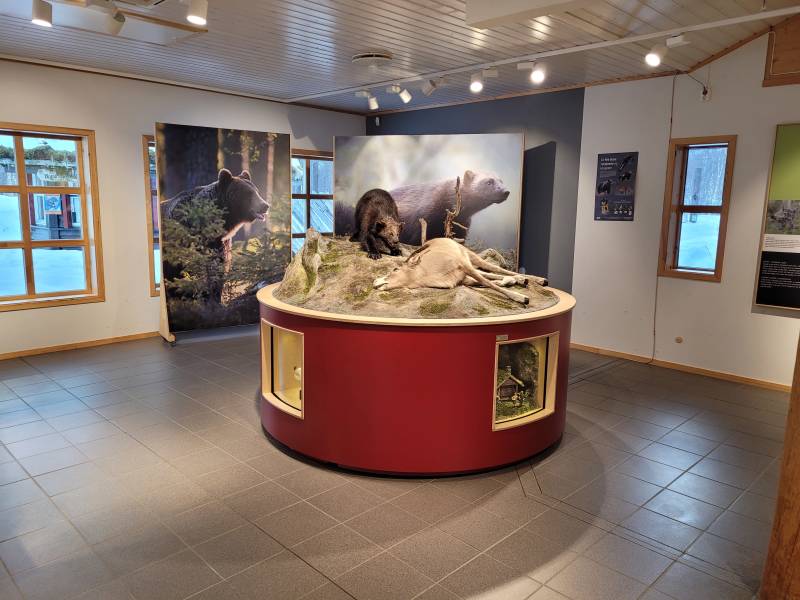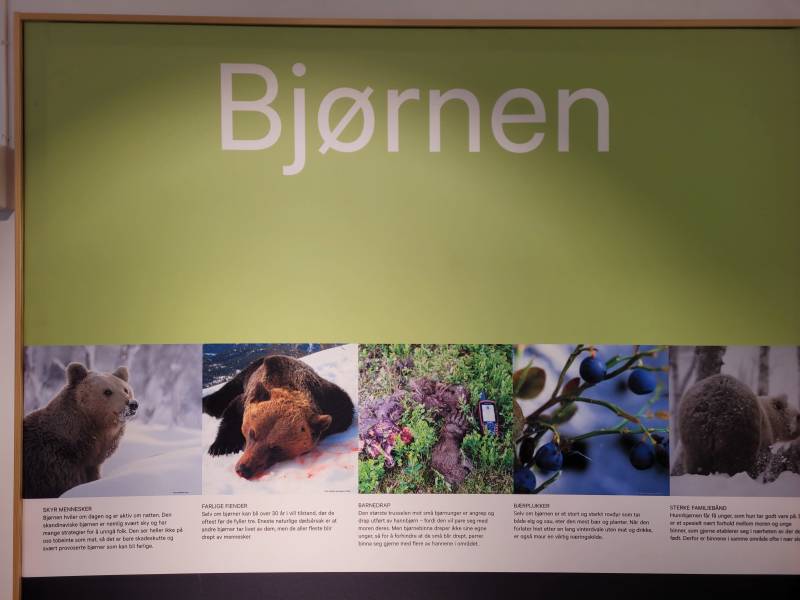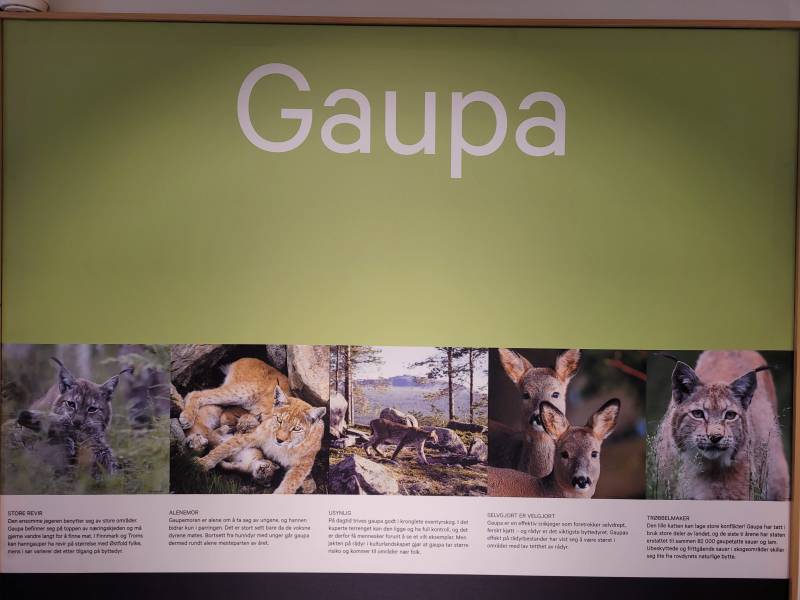Exhibition: Brown bear
Where does the bear lives?
The bear is a forest animal and can be found in several locations in Norway along the border with Sweden. You can find out more about the bear’s distribution on this page. In Norway, the bear is found in areas next to the Swedish, Finnish and Russian borders.
Norway has what are called bear management areas. These are areas where the bear will be given priority over other interests, such as grazing and hunting. It is worth remembering that these are the areas with she-bears, whereas male bears can pop up anywhere in the country. This is because male bears, and young males in particular, roam over large distances.
Was it a bear?
When you find tracks in the forest, it is not always easy to know what sort of animal made them. On this page, we take a closer look at tracks and traces left by bears! Bear droppings, or scat, vary according to what the bear has eaten. Bears do not have very good digestion, so whole berries, plant residues, ants, hair and bits of bone can often be seen.
What does the bear eat?
The bear is quite similar to us humans in terms of it’s diet, as it is able to eat both meat and plants. Animals with such a diet are called omnivores.
What the bear eats varies according to the season. In the early spring, it eats the carcasses of animals that have died during the winter. When the ant hills start to wake up, the bear will eat large quantities of ants. Grass and herbs are important in early summer, while in late summer and autumn blueberries are the main food source. A bear can eat 90 litres of blueberries in the course of a day.
FEAR OF BEARS
When the bear began to return, many people living in areas with bears felt afraid. This is not surprising, of course. After all, the bear is a large animal. After having no bears for so long, we had forgotten how bears behave. When they returned, they were unfamiliar to us. It is a a trait for us humans to be a little more afraid of the unfamiliar.
After some time, however, we often see people living in areas with bears becoming slightly less afraid as they discover that the bear is not as aggressive as first feared.
WHY DO BEARS ATTACK?
It is not unknown for individual bears to attack people. This typically happens when a bear feels threatened in some way. In most cases, the bear was shot at first and therefor had a reason to defend itself. Such cases usually involve hunters with dogs coming across a male bear. And if you have a weapon, the obvious thing to do is defend yourself against the large animal. However, experience shows that this can be a bad idea.
WHAT SHOULD YOU DO IF YOU MEET A BEAR?
Meeting a bear is normally undramatic. Just like other animals, the bear will usually run off when it notices you. The bear has a good sense of smell and is able to scent hikers from a long way off. This means that the bear generally runs away before you even know it’s there.
If you are moving quietly and downwind, you may on very rare occasions encounter a bear.
So what should you do if you meet a bear?
1) Talk to the bear: Make human sounds so that the bear knows there is a human around
2) Stay calm: Try to stay calm. Pay attention to what is happening.
3) Withdraw: If you feel unsafe, withdraw slowly.
If you follow these three pieces of advice, you can expect the bear to run away quickly, leaving you to continue your hike.
Audio guides available in:English (British), Deutsch , 日本語








